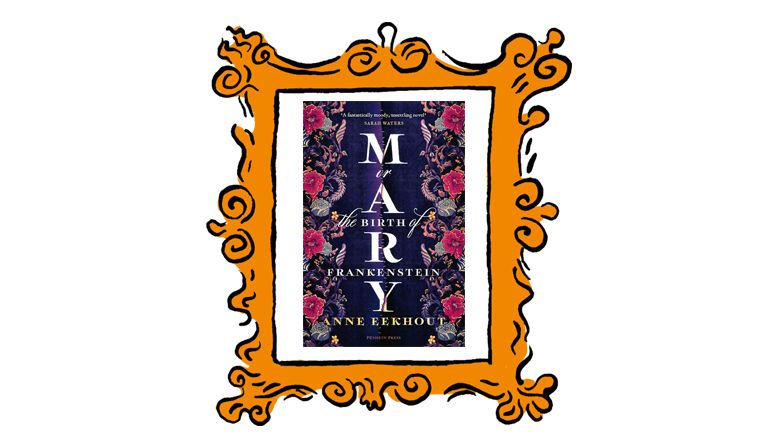It’s hard to miss them—in my local bookshop, and probably in yours, too—the many retellings and reimaginings of classic myths, stories and even lives. There, recently published, is Sandra Newman’s Julia, which narrates George Orwell’s Nineteen Eighty-Four from the perspective of former protagonist Winston Smith’s love, Julia Worthing. Nearby is Demon Copperhead, Barbara Kingsolver’s take on David Copperfield. Over there are Madeline Miller’s popular revisions of the Greek myths, The Song of Achilles and Circe. Even Maggie O’Farrell’s Hamnet sort of counts, being a fictional account of the marriage of William Shakespeare and Anne—or Agnes—Hathaway, and their grief at the loss of their son.
Some of these books are better than others. And they certainly all sell very well. But, while recently reading the newly translated Mary, or the Birth of Frankenstein by Anne Eekhout—which, you might’ve guessed, gives new life to Mary Shelley—I couldn’t help but wonder: why? Why are retellings—often feminist retellings—so prevalent at the moment?
I went in search of answers, and quickly came across one—or at least the suggestion of one—from Emma Herdman, who is publishing director at Bloomsbury and editor of Miller’s Circe. “I wonder if employing the comfort of a story that’s already known as a jumping-off point to explore contemporary ideas makes contemporary debates more accessible,” she told the Guardian earlier this year, “offering readers an easier way in to discussing today’s politics – particularly the politics of being a woman.” And I get it. At a time when understanding what it means to be a woman can be so very difficult, clarity can be comforting. Let’s take our opportunities to look back on the past with clear convictions: women suffered at the hands of gods and men—and now time will finally do justice to their stories.
But I also worry. It’s no small thing that authors now capture our attention not by holding a mirror up to the world, but by instead plotting narratives that offer a corrected, comfortable version of it.
This is evident even in Mary, or The Birth of Frankenstein, where Eekhout’s project is not to recreate Shelley’s life but to fictionalise it—and so present a particular version of it. Among the choices she makes, the most novel is to give wind to the romance between Mary and Isabella Baxter. However, it feels as though Eekhout is less interested in the romance itself between the two women than she is in presenting the possibility that Shelley might have been bisexual to the 21st-century reader—who is fully aware of the silences in queer history.
There is a sequence in which Mary and Isabella are alone in a Mr Booth’s library, and the air is charged with erotic potential. Together, they leaf through a box full of Scottish myths, promptly discover an illustration of witches (also redeemed in the eyes of the 21st-century reader) and then go out on a walk together, just “two girls in the sunshine”. A couple of pages later, Mr Booth escorts Mary to the library again, and shows her a first edition of Luigi Galvani’s text on animal electricity, but Mary can’t read Italian and feels that because of Mr Booth’s company the room now feels changed by a “slip in reality that had not occurred” earlier with Isabella. So the sequence concludes. Plotted with such strictness and designed harmony, it seems as though Mary’s life must make a point: that Mary loved a woman, and that is a story to celebrate.
Why must authors spoon-feed us these history lessons? I suspect a simple thing: that they, too, struggle to make sense of the sound and fury of modern existence, just as we do. And what can they do in response? Serve up researched knowledge of the past, its lessons carefully curated and clarified so that we all have more to agree on than we did before.
But an author who does not challenge our perceptions risks becoming a sort of channel of confirmed ideas. The reader merely a subscriber.
A different history lesson reminds us that retellings were not always employed to massage—but rather disturb—the collective conscience. The Romantics had turned their sceptical eye on the canon and declared gods as tyrants, devils as saviours. Prometheus was the unsung hero that everyone was writing about—indeed, Mary Shelley’s Frankenstein was itself a retelling of the Prometheus myth
But Mary challenged the interpretations of her contemporaries, for whom Prometheus was a hero for his transgressions committed to save a race that was not his own. Instead, she considered how Prometheus might change in the changed world—and so her modern Prometheus failed to save the life he had himself created. This profound shift was achieved in dialogue with her time, as well as with the particular trials of her own life.
Shelley’s achievement shows us what we have to lose. It’s not time to retire retellings—but perhaps we ought to reconsider the demands we make of ourselves as readers. Instead of snuggling up to sanitised histories, let’s open ourselves to the impossible questions of our own time. It might force authors to find a new monster to contend with.
The dangers of retellings
Bookshops of full of new versions of stories by Shakespeare, Dickens, Orwell and more. But what are we missing by constantly rethinking the classics?
November 16, 2023










